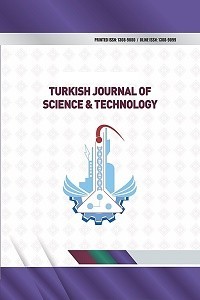Data Mining Techniques Based Students Achievements Analysis
Data Mining Techniques Based Students Achievements Analysis
___
- 1. Cortez, P., and Silva, A. (2008). Using data mining to predict secondary school student performance. In the Proceedings of 5th Annual Future Business Technology Conference, Porto, Portugal, 5-12. 2. Ma, Y., Liu, B., Wong, C., Yu, P., and Lee, S. (2000). Targeting the right students using data mining. In Proc. of 6th ACM SIGKDD International Conference on Knowledge Discovery and Data Mining. Boston, USA, 457–464. 3. Minaei-Bidgoli, B., Kashy, D., Kortemeyer, G., and Punch, W. (2003). Predicting student Performance: An application of Data Mining Methods with an educational web-based system. In Proc. of IEEE Frontiers in Education. Colorado, USA, 13–18 4. Şengür, D., and Tekin, A. (2013). Öğrencilerin mezuniyet notlarinin veri madenciliği metotlari ile tahmini. Bilişim Teknolojileri Dergisi, 6(3): 7-16. 5. Kotsiantis S.., Pierrakeas, C., and Pintelas P. (2004). Predicting students’ performance in distance learning using machine learning techniques. Applied Artificial Intelligence (AAI), 18(5): 411–426. 6. Pardos Z., Heffernan N., Anderson B., and Heffernan C. (2006). Using fine-grained skill models to fit student performance with bayesian networks. In Proc. of 8th Int. Conf. on Intelligent Tutoring Systems. Taiwan. 7. Turhan, M., Şengür, D., Karabatak, S., Guo, Y., and Smarandache, F. (2018). Neutrosophic weighted support vector machines for the determination of school administrators who attended an action learning course based on their conflict-handling styles. Symmetry, 10(5): 176. 8. Kabakchieva, D. (2012). Student performance prediction by using data mining classification algorithms. IJCSMR, 1(4): 686-690. 9. Devasia, T., Vinushree, T. P., and Hegde, V. (2016, March). Prediction of students performance using educational data mining. In Data Mining and Advanced Computing (SAPIENCE), International Conference on (pp. 91-95). IEEE. 10. Vyas, M. S., & Gulwani, R. (2017, April). Predicting student's performance using cart approach in data science. In Electronics, Communication and Aerospace Technology (ICECA), 2017 International conference of (Vol. 1, pp. 58-61). IEEE. 11. Safavian, S. R., and Landgrebe, D. (1991). A survey of decision tree classifier methodology, IEEE Transactions on Systems Man and Cybernetics, 21: 660-674. 12. Sengur, A. (2008). An expert system based on linear discriminant analysis and adaptive neuro-fuzzy inference system to diagnosis heart valve diseases. Expert Systems with Applications, 35: 214-222. 13. Hastie T., Tibshirani R., and Friedman J. (2001). “The Elements of Statistical Learning: Data Mining, Inference, and Prediction”. Springer-Verlag, NY, USA. 14. Fix, E., and Hodges, J. L. (1951). Discriminatory Analysis, Nonparametric Discrimination: Consistency Properties; Technique Report No. 4; U.S. Air Force School of Aviation Medicine, Randolf Field Texas: Universal City, TX, USA, pp. 238–247. 15. Sengur, A. (2012). Support vector machine ensembles for intelligent diagnosis of valvular heart disease. Journal of Medical Systems, 36: 2649-2655.
- ISSN: 1308-9080
- Başlangıç: 2009
- Yayıncı: Fırat Üniversitesi
Investigation of Diffusion and Adsorption of Acetone in Building Materials by Dynamic Method
Data Mining Techniques Based Students Achievements Analysis
Dönüş ŞENGÜR, Songül KARABATAK
Occupational Health Risk Analysis and Assessment in Cement Production Processes
Ebru Kavak AKPINAR, İbrahim Halil DEMİR
Keban Baraj Gölünde Yaşayan Aynalı Sazan (Cyprinus carpio L., 1758)’de Bazı Büyüme Parametreleri
Metin ÇALTA, Mustafa DÜŞÜKCAN, Burcu SAYIN
Perforeli Kanatlarda Şekil, Boyut Ve Eğim Açısının Isıl Performansa Etkisi
